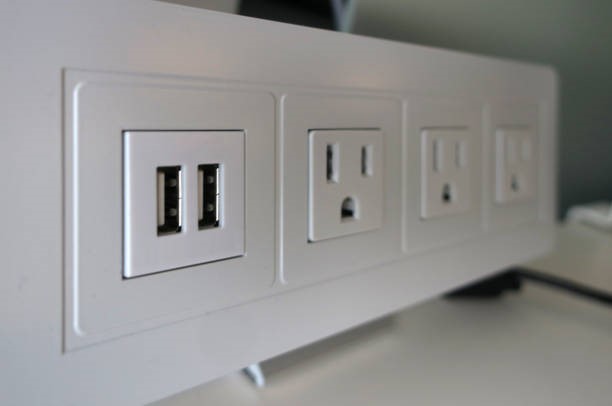One strategy for keeping your family and your property safe from electrical hazards is to understand the different types of outlets. You may not always consider their differences when plugging in devices because some plugs are versatile and can fit into various outlets without issue. However, certain appliances require specific outlet types, and using the wrong one can result in vampire energy usage and the potential for electrical shocks.
While it’s easy to overlook them on your walls, knowing what each one does and where it should be used can prevent accidents and electrical fires. Continue reading to discover more about your old and new electrical outlets at home.
Standard 15-Amp Outlets
This type is the most widely used outlet for powering lamps, phone chargers, and small kitchen gadgets. With its two vertical slots and round grounding holes, these 120-volt outlets supply up to 15 amps of electricity, making them suitable for lower-powered devices like desk fans and music players that draw less than 12 amps.
20-Amp Appliance Outlets
Larger appliances like microwaves, garage door openers, and window air conditioners require 20 amps to run safely without the risk of overheating. Correspondingly, these outlets have one T-shaped slot, one vertical slot, and a grounding hole to supply more sustained power, usually via a dedicated circuit.
Ground Fault Circuit Interrupter (GFCI) Outlets
GFCI outlets cut power when they detect sudden surges, making them essential in bathrooms, kitchens, basements, and outdoor areas prone to electrical faults caused by water exposure or damage. They are easily identified by their “test” and “reset” buttons. GFCIs monitor electricity flowing through a circuit and quickly cut power if there’s a difference, protecting against shocks.
Arc Fault Circuit Interrupter (AFCI) Outlets
AFCIs shut off when dangerous arc faults occur in damaged wires and cords, preventing potential fires. They use sensors to monitor the electrical waveform and shut off power at the first sign of an arc fault before it turns into a fire. These outlets can be manually reset after tripping and are often installed in kitchens, bedrooms, and laundry rooms as an added safety measure.
Tamper-Resistant Outlets
Designed to prevent children from inserting objects like paperclips and fingers into slots, these outlets have a built-in shutter system that only opens when two prongs are inserted at once, covering slots unless plugged in correctly. These outlets are now required in all new home constructions and can easily replace most older outlets with a simple swap.
Let the Experts Help You Evaluate Your Electrical Outlets
If you’re still unsure about the type of power outlets installed in each room or if upgrades are necessary, don’t hesitate to contact the electricians at Vintage Electric for a thorough assessment. We will inspect potential hazards and provide tailored recommendations for transitioning to new electrical outlets. Investing in outlet safety will secure long-term peace of mind and elevate the overall safety of your residential and commercial property to a higher standard.


Recent Comments